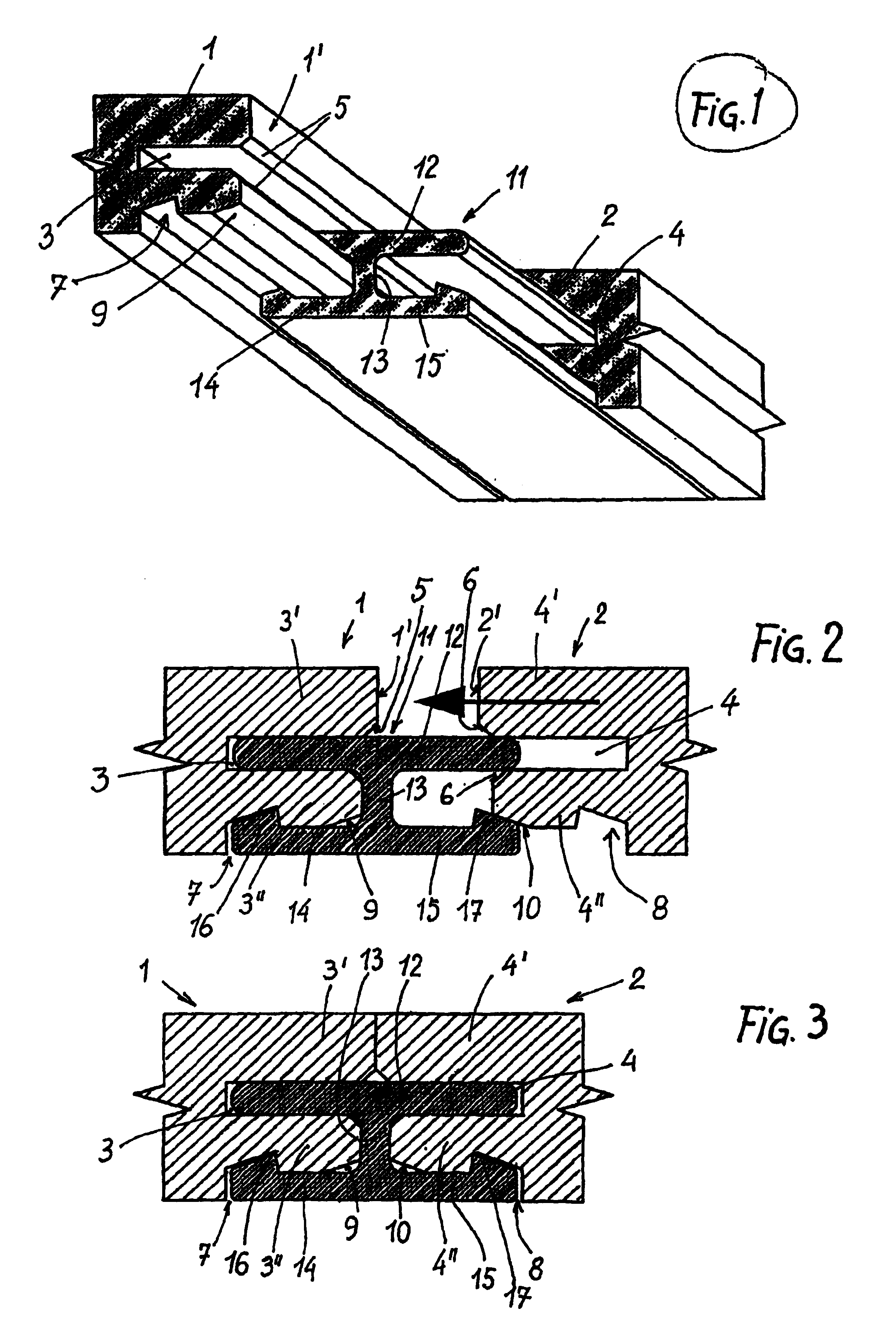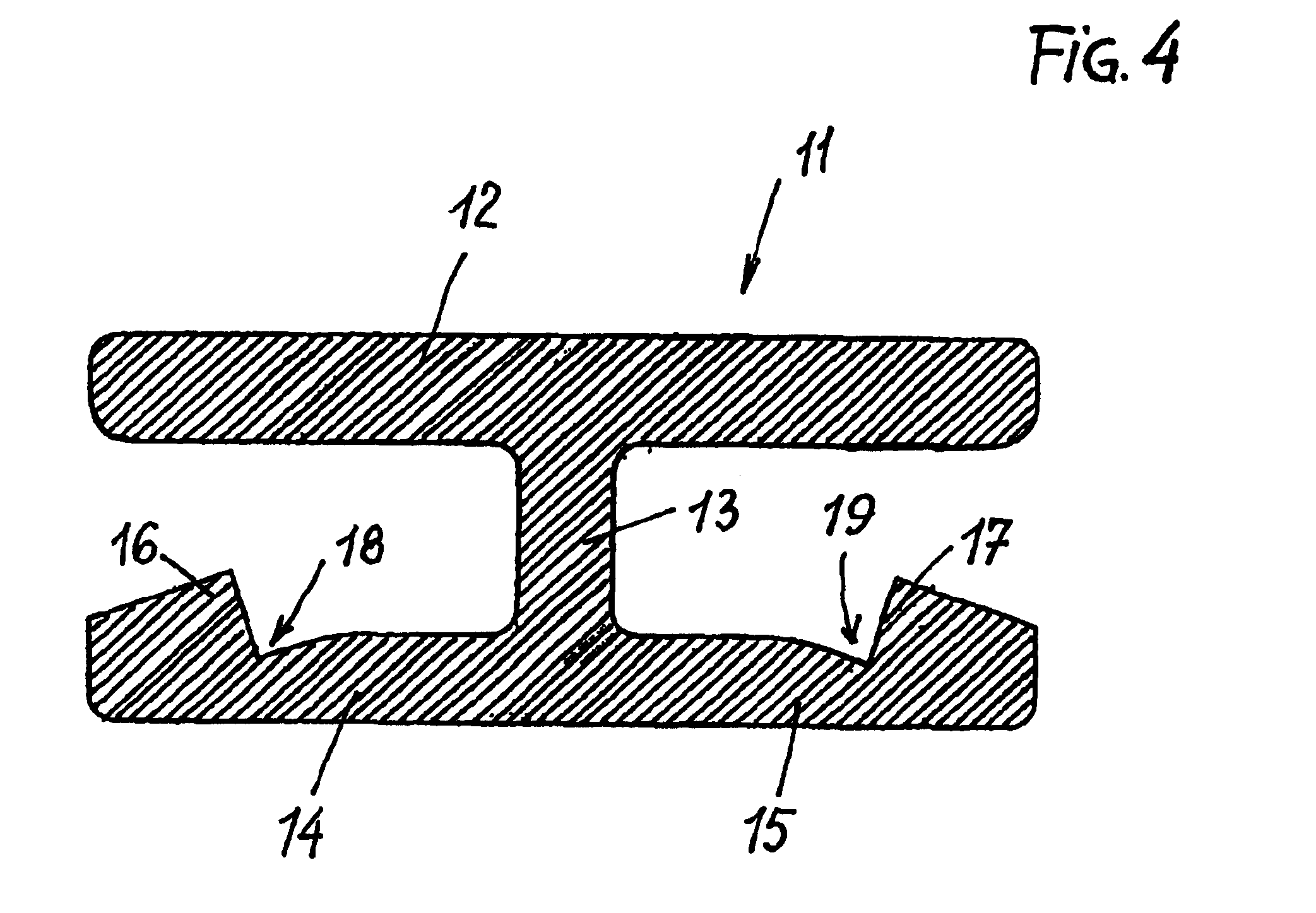Device for joining flat, thin members that rest against another
a technology of thin members and flat joints, applied in the direction of rod connections, mechanical devices, walls, etc., can solve the problems of substantial force on the steps, inability to use the members, and little material available for clamping the additional snap-fi
- Summary
- Abstract
- Description
- Claims
- Application Information
AI Technical Summary
Benefits of technology
Problems solved by technology
Method used
Image
Examples
Embodiment Construction
[0016] The two members are labeled 1 and 2 that are to be joined side-by-side along their narrow faces 1', 2'. Members 1, 2 on their narrow faces 1', 2' have grooves 3, 4 whose lateral flanks run parallel to each other. In the given exemplary embodiment, the lateral surfaces of grooves 3, 4 also run parallel to the top of members 1, 2. The lateral walls of grooves 3, 4 transition into narrow faces 1', 2' via bevels 5 or 6. On the bottom, members 1, 2 have detent grooves 7, 8 that are provided with run-in surfaces 9, 10, which are disposed running outward from narrow faces 1', 2' at an angle to the bottom of members 1, 2 and transition into detent grooves 7, 8.
[0017] A joining element 11, which has an external-tongue-like part 12 that can be inserted into grooves 3, 4 in such a manner as to bridge the inner gap, is provided for joining members 1, 2. The open longitudinal edges of tongue-like part 12 are, as can be seen in the figures, rounded or beveled in order to more easily be int...
PUM
 Login to View More
Login to View More Abstract
Description
Claims
Application Information
 Login to View More
Login to View More - R&D
- Intellectual Property
- Life Sciences
- Materials
- Tech Scout
- Unparalleled Data Quality
- Higher Quality Content
- 60% Fewer Hallucinations
Browse by: Latest US Patents, China's latest patents, Technical Efficacy Thesaurus, Application Domain, Technology Topic, Popular Technical Reports.
© 2025 PatSnap. All rights reserved.Legal|Privacy policy|Modern Slavery Act Transparency Statement|Sitemap|About US| Contact US: help@patsnap.com


